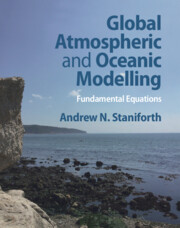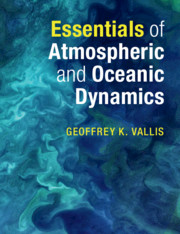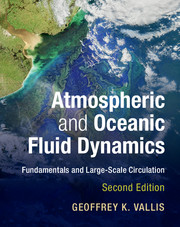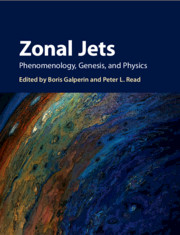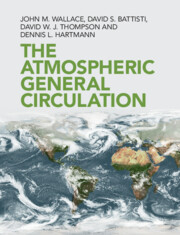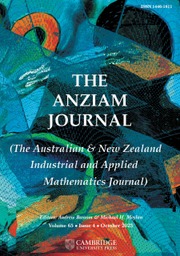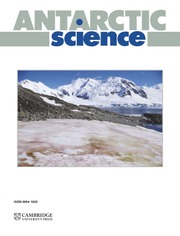Global Atmospheric and Oceanic Modelling
Fundamental Equations
- Author: Andrew N. Staniforth
- Date Published: July 2022
- availability: In stock
- format: Hardback
- isbn: 9781108838337
Hardback
Other available formats:
eBook
Looking for an examination copy?
This title is not currently available for examination. However, if you are interested in the title for your course we can consider offering an examination copy. To register your interest please contact [email protected] providing details of the course you are teaching.
-
Combining rigorous theory with practical application, this book provides a unified and detailed account of the fundamental equations governing atmospheric and oceanic fluid flow on which global, quantitative models of weather and climate prediction are founded. It lays the foundation for more accurate models by making fewer approximations and imposing dynamical and thermodynamical consistency, moving beyond the assumption that the Earth is perfectly spherical. A general set of equations is developed in a standard notation with clearly stated assumptions, limitations, and important properties. Some exact, non-linear solutions are developed to promote further understanding and for testing purposes. This book contains a thorough consideration of the fundamental equations for atmospheric and oceanic models, and is therefore invaluable to both theoreticians and numerical modellers. It also stands as an accessible source for reference purposes.
Read more- Provides a comprehensive and holistic account of the fundamental equations governing atmospheric and oceanic models to encourage further development in climate and weather forecasting
- Improves understanding of atmospheric and oceanic modelling by providing a bridge between theoretical geophysical fluid dynamics and quantitative weather and climate prediction
- Takes a fresh approach to the fundamental equations that underpin weather and climate prediction by working from the observation that the Earth has an equatorial bulge, rather than assuming it is perfectly spherical
Reviews & endorsements
‘Andrew Staniforth has produced a comprehensive and insightful book on the mathematical foundation of global atmosphere and oceanic modelling. For different geophysical fluid applications, he guides us masterfully from the first principles of fluid physics to their evolution equations. The book covers all the fundamental aspects of these equations including conservation laws and exact nonlinear solutions. This brilliant book is ideal for introducing graduate students to the subject matter as much as it is relevant for experts as a reference book.’ Gilbert Brunet, Bureau of Meteorology, Melbourne
See more reviews‘Well, this is an impressive book. It covers both the equations of motion and how those equations and their approximations can be used in models of the ocean and atmosphere. It is clearly written, careful and thorough, with a range and a depth that is unmatched elsewhere. It will be of immense value both to those interested in the fundamentals and those wishing to build models that have a sound foundation. It will be a standard for years to come.’ Geoffrey K. Vallis, University of Exeter
‘This is the textbook I wish I’d had as a graduate student and course instructor! This is an incredibly comprehensive resource for students and researchers alike. I am confident the book will become the go to reference on atmospheric and oceanic modelling for the 2020s and beyond.’ Andrew Weaver, University of Victoria
‘Global Atmospheric and Oceanic Modelling is bound to become a classic in the literature of Geophysical Fluid Dynamics. Written by a multi-decade insider to the design of the numerical “dynamical cores” that are at the heart of the models employed for both weather prediction and climate change projection, the book provides a meticulously documented development of dynamically and thermodynamically self-consistent sets of equations that are employed to describe the evolution of these geophysical fluids. Highlights of the book include a careful development of the influence of the ellipsoidal shape of the planet which acts through the gravitational field on the evolution of these fluid domains.’ W. Richard Peltier, University of Toronto
‘This text is a tremendous resource for anyone looking for a rigorous, thorough treatment of the fundamental equations needed for the development of dynamical cores of numerical models for weather and climate, especially for those interested and/or involved in model design and development. The treatment is detailed, general, and exact without ad-hoc approximations or simplifications. This includes a more truthful representation of variations in gravity due to the geometry of the system. Andrew Staniforth offers the reader unique insights from his experience of an entire career as a leading scholar in the field.’ Thomas Birner, University of Munich
'… comprehensive and rigorous … Graduate students and advanced researchers with interests in atmospheric, oceanic, or general climate modeling will find this treatise invaluable … Highly recommended.' M. Alam, Choice
Customer reviews
Not yet reviewed
Be the first to review
Review was not posted due to profanity
×Product details
- Date Published: July 2022
- format: Hardback
- isbn: 9781108838337
- length: 816 pages
- dimensions: 260 x 207 x 43 mm
- weight: 2kg
- availability: In stock
Table of Contents
Preface. Notation and acronyms. Part I. Foundations:
1. Introduction
2. Governing equations for motion of a dry atmosphere: Vector form
3. Governing equations for motion of a cloudy atmosphere: Vector form
4. Governing equations for motion of geophysical fluids: Vector form
5. Orthogonal curvilinear coordinate systems
6. Governing equations for motion of geophysical fluids: Curvilinear form
7. Representation of gravity: Basic theory and spherical planets
8. Representation of gravity: Further theory and spheroidal planets
9. Thermodynamic potentials and thermodynamical consistency
10. Moist thermodynamics
11. Ocean thermodynamics
12. Geopotential coordinates for modelling planetary atmospheres and oceans
13. Vertical coordinates and boundary conditions
14. Variational methods and Hamilton's principle of stationary action
15. Conservation. Part II. Dynamically Consistent Equation Sets:
16. Deep and shallow equation sets in 3D
17. Quasi-shallow equation sets in 3D
18. Shallow water equation sets in 2D
19. A barotropic potential vorticity (BPV) equation for flow over a spheroidal planet. Part III. Exact Steady and Unsteady Nonlinear Solutions:
20. Exact steady solutions of the global shallow water equations
21. Exact 3D steady solutions of global equation sets
22. Exact unsteady solutions of the barotropic potential vorticity equation over an ellipsoid
23. Exact unsteady solutions in 3D over an ellipsoidal planet. Appendix. References. Index.
Sorry, this resource is locked
Please register or sign in to request access. If you are having problems accessing these resources please email [email protected]
Register Sign in» Proceed
You are now leaving the Cambridge University Press website. Your eBook purchase and download will be completed by our partner www.ebooks.com. Please see the permission section of the www.ebooks.com catalogue page for details of the print & copy limits on our eBooks.
Continue ×Are you sure you want to delete your account?
This cannot be undone.
Thank you for your feedback which will help us improve our service.
If you requested a response, we will make sure to get back to you shortly.
×
